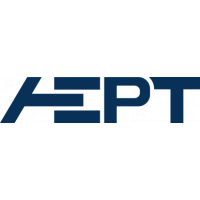The effect of the shape of the applied voltage waveform on the energy efficiency of reactive species generation is investigated in an atmospheric pressure RF microplasma jet operated in a He/O$2$ mixture (99.5\%/0.5\%) based on a one-dimensional hybrid fluid-kinetic simulation method. Using a tailored waveform synthesized from four consecutive harmonics (with a base frequency of $f{\rm b}=13.56~$MHz and amplitudes of $(160/k)$~V for the $k$th harmonic), it is shown that by changing the identical phases of the even harmonics in the waveform, $\varphi$, the generation efficiencies of three specific reactive species (helium metastables, atomic and vibrationally excited oxygen), defined as the ratio of mean density and input plasma power, attain their maxima for different values of $\varphi$, due to changes in the Electron Energy Probability Function (EEPF). The phase control of the EEPF and its critical role in modulating generation energy efficiencies are explained in detail. The simulation results are verified by experimental (Phase Resolved Optical Emission Spectroscopy and Two Photon Absorption Laser Induced Fluorescence) data.
| Field | Value |
|---|---|
| Publisher | |
| Authors | |
| Release Date | 2024-10-29 |
| Identifier | c2c89a52-d8f0-49ec-a0a6-f5239eefb471 |
| Permanent Identifier (DOI) | |
| Permanent Identifier (URI) | |
| Is supplementing | |
| Plasma Source Name | |
| Plasma Source Application | |
| Plasma Source Specification | |
| Plasma Source Properties | COST-jet, consists of two identical and co-planar parallel electrodes made of stainless steel. The electrode gap is 1 mm. The electrodes are enclosed by two quartz plates confining the plasma volume to 1×1×30 mm^3. The base frequency is $f_{\rm b}=13.56~$MHz while the amplitudes are $(160/k)$~V for the $k$th harmonic with k=1..4. |
| Language | English (American Samoa) |
| License | |
| Plasma Medium Name | |
| Plasma Medium Properties | 99.5% He / 0.5% O2 |
| Contact Name | Mate Vass |
| Contact Email | |
| Public Access Level | Public |
| Funding Agency | |
| Project | |
| Subproject |


![[Open Data]](https://assets.okfn.org/images/ok_buttons/od_80x15_blue.png)